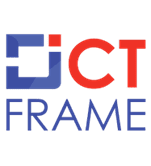Major Boost for Tourism: Nepal Revises Upper Mustang Permit Fee
Major Boost for Tourism
19th November 2025, Kathmandu
Nepal’s government has made a significant move to boost tourism in the restricted Upper Mustang region, replacing the previous $500 trekking permit with a more flexible $50-per-day fee.
Major Boost for Tourism
This crucial amendment to the Immigration Regulations is expected to dramatically increase the flow of foreign visitors to the culturally rich area.
Local stakeholders, who have long advocated for easing restrictions, are celebrating the decision as a partial fulfillment of their demands.
Understanding the Key Permit Change
The Cabinet-approved revision means that foreign tourists are no longer obligated to pay a minimum of $500 trekking permit for 10 days, regardless of their actual stay.
Instead, the new structure mandates a charge of just $50-per-day fee for the precise duration of their visit to Upper Mustang. Example: A tourist planning a 5-day trek will now pay $250, compared to the non-refundable $500 previously required.
This shift directly addresses a major barrier that historically deterred many budget and short-term travelers. The revised Immigration Regulations aim to make the unique experiences of Upper Mustang accessible to a wider demographic of adventurers.
The Impact of the Previous Restriction
For years, the high entry cost acted as a significant bottleneck. While the broader Mustang region attracts about 150,000 foreign visitors annually, only a tiny fraction—estimated at 3–4 percent—ventured into the Upper Mustang area.
The mandatory minimum payment meant that even a quick exploration trip was financially demanding. This high entry fee often directed tourists towards less restrictive, though equally stunning, trekking destinations in Nepal. The economic potential of Upper Mustang was consistently underutilized because of this policy.
Local Leaders Welcome the Decision
The decision has been met with considerable enthusiasm by local leaders and tourism entrepreneurs in the Mustang region. They view this amendment as a crucial step toward realizing the region’s full tourism potential.
Local representatives had been actively campaigning for months to lower or restructure the restrictive permit cost. While the ultimate goal was full liberalization, the shift from a high minimum fee to a daily rate is seen as a substantial and positive compromise.
They believe this new structure will incentivize longer stays and inject more revenue into the local economy through accommodation, guides, and services.
Expected Tourism Growth and Economic Benefits
Industry experts anticipate a significant surge in tourist arrivals to Upper Mustang. The region, known for its unique arid landscape, ancient monasteries, and distinctive culture, is a prime destination for specialized cultural and adventure tourism.
-
Increased Footfall: The reduction in the financial barrier will likely attract thousands of additional visitors.
-
Economic Spillover: More tourists mean increased income for local businesses, including hotels, restaurants, and trekking agencies.
-
Regional Development: The sustained flow of tourism revenue can be actively used for the conservation of the region’s delicate environment and cultural heritage.
The government’s action underscores a commitment to balancing conservation—Upper Mustang remains a restricted area—with promoting sustainable tourism.
The new $50-per-day fee is a pragmatic measure set to unlock the door for countless international trekkers and provide a vital economic lifeline to the local communities of Upper Mustang.
For more: Major Boost for Tourism









